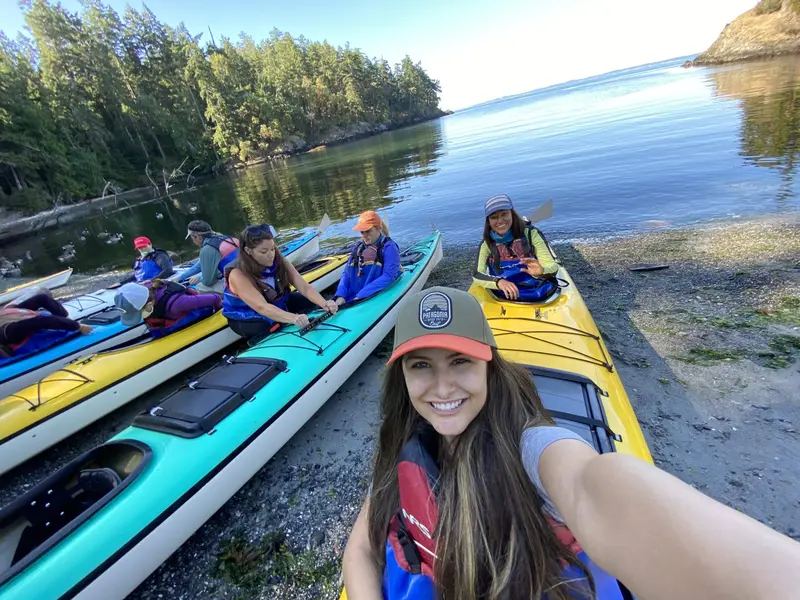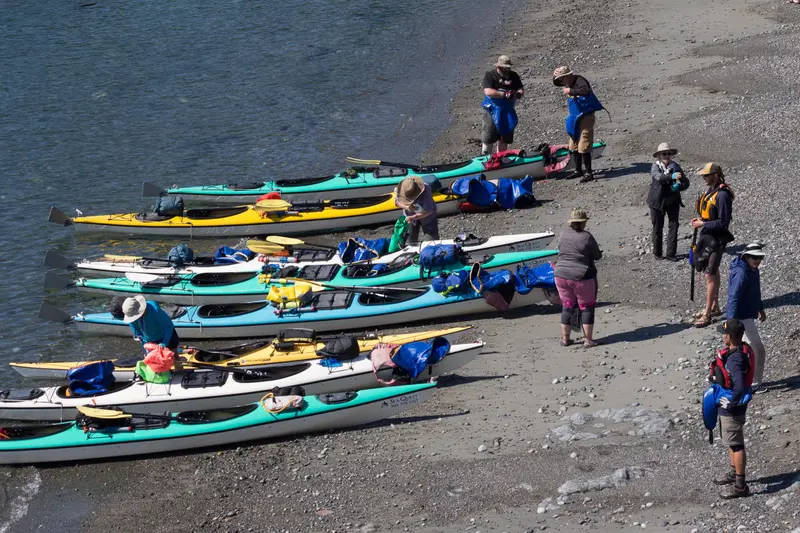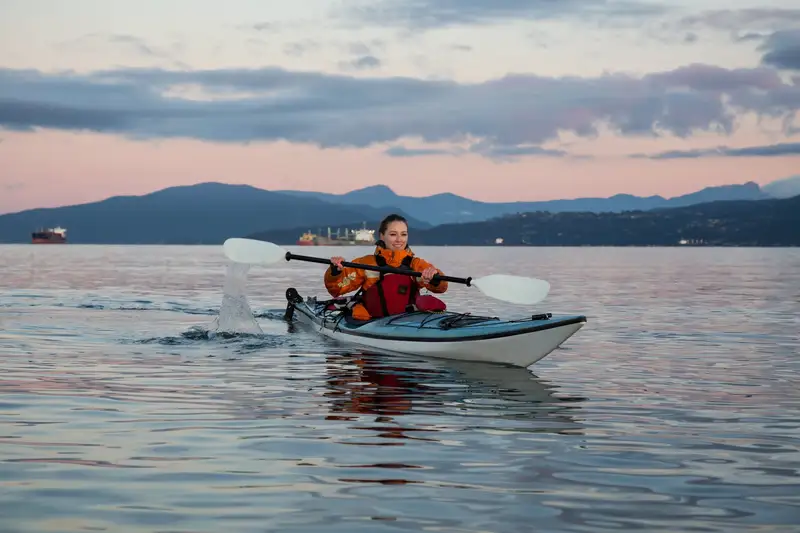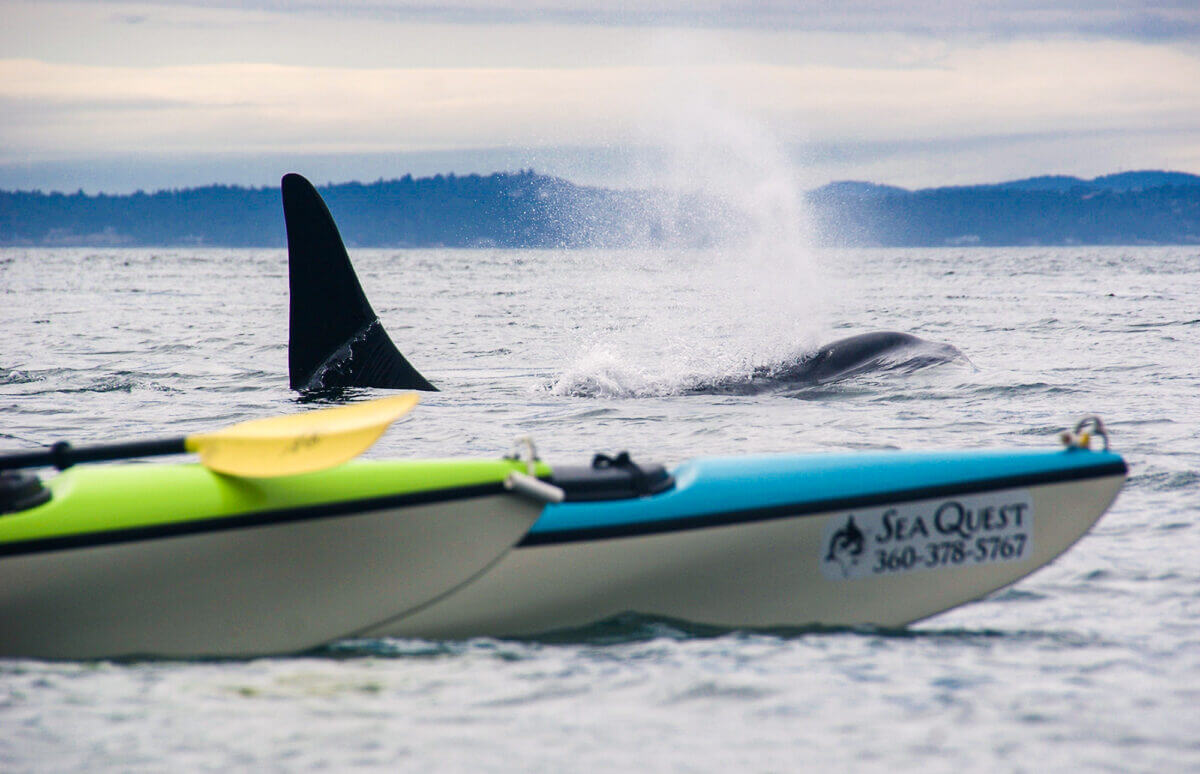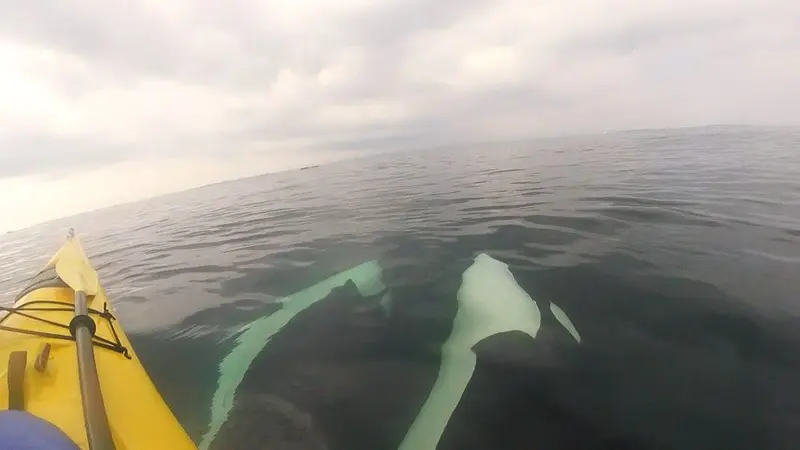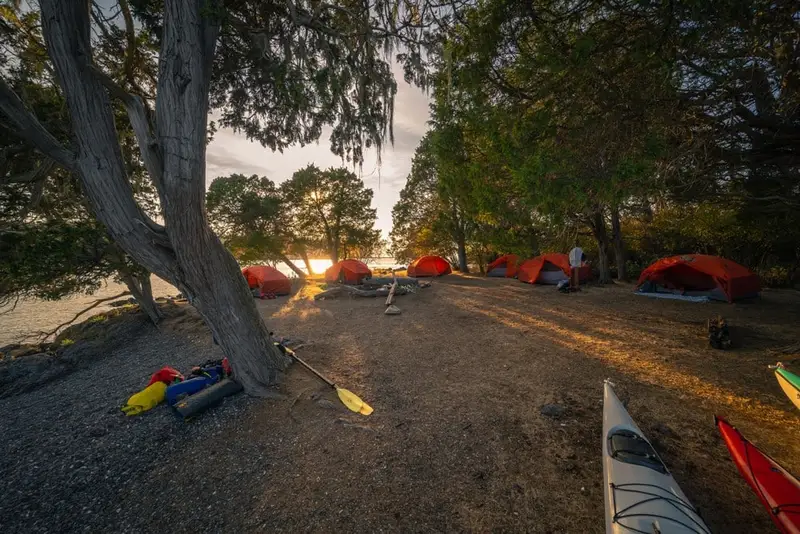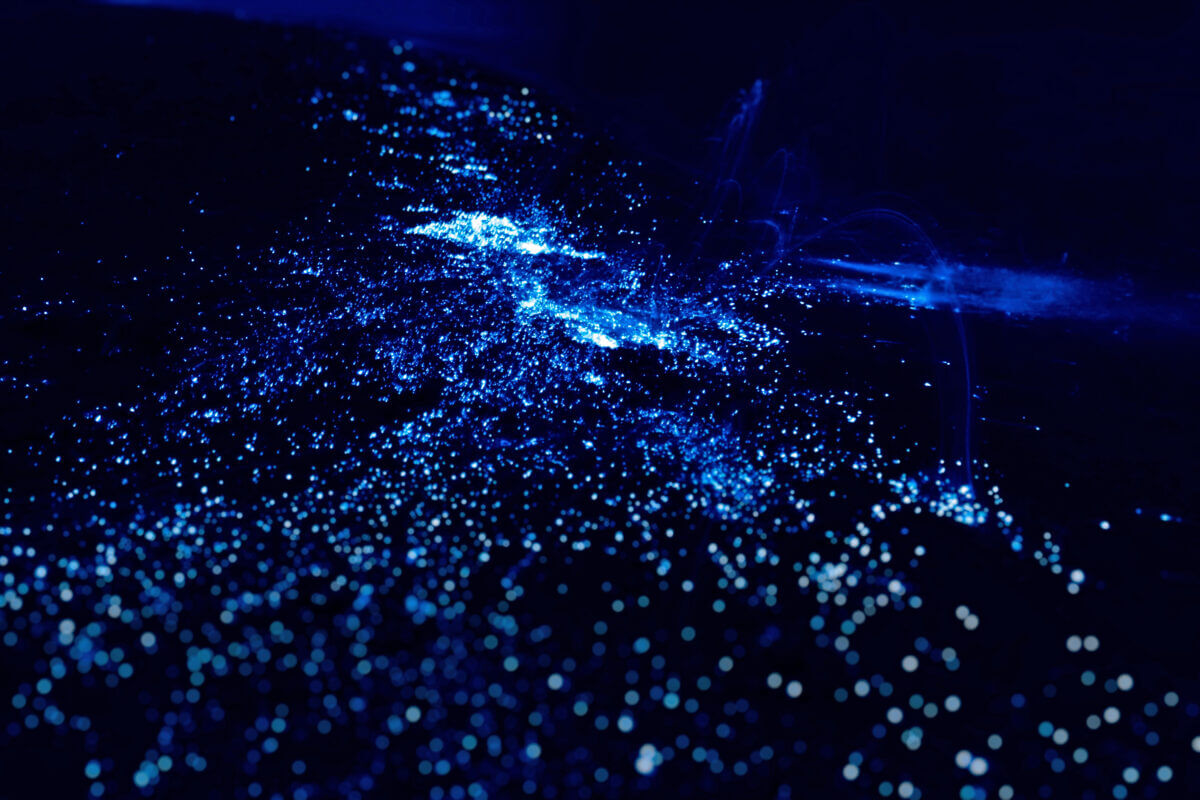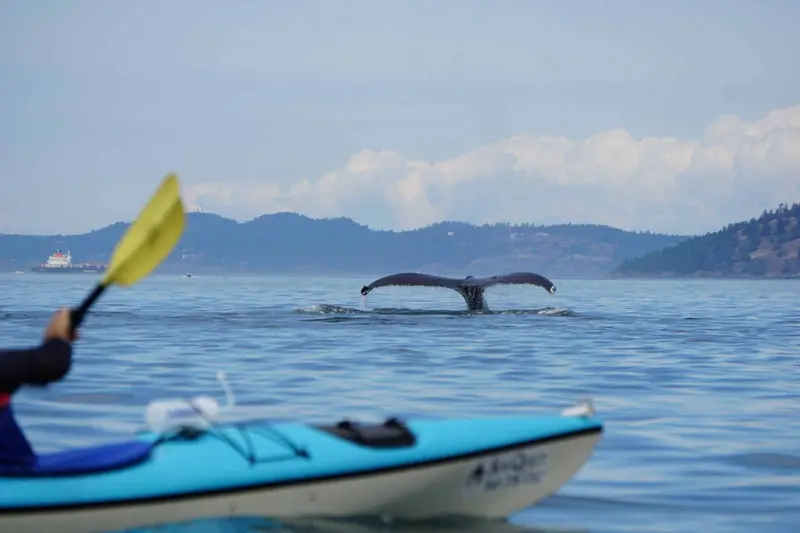The San Juan Islands would seem to be an ideal habitat for great white sharks, the species infamous for knocking kayak fisherman and surfers into the water off California and Oregon a couple of times each year. Our huge populations of seals and sea lions and cool waters must be very attractive to these apex predators. But to the puzzlement of many, great whites have never been recorded in the San Juan Islands or Salish Sea of Washington. Our theory is that our large population of orca whales keeps great white sharks at bay, hence the title of this blog article “Orca Whales Prevent Shark Attacks on Kayaks in the San Juan Islands”.
All 3 types of orcas in Washington are highly motivated to persecute or kill any great white shark that strays into the San Juan Islands. The “offshore” killer whales specialize in eating sharks as a major part of their diet and show extreme teeth wear from chewing through abrasive shark hides. The “transient”/Bigg’s killer whales are known to kill great white sharks and there are some great videos online showing them doing this and eating the huge nutritious liver afterwards. And “resident” killer whales that eat primarily salmon, the orcas we see most often on our kayak tours in Washington, would certainly attack great white sharks with vigor to keep their family pods safe from predation. Who needs shark nets when you’ve got killer whales on patrol protecting the waters?!
Here in the San Juan Islands of Washington, we dearly miss seeing basking sharks on our kayak tours. Basking sharks, the 3rd largest species reaching 30 feet in length, were formerly easy to observe as they slowly trawled along the surface for plankton with their giant fins sticking into the air. Orca whales left them alone because they represented no danger to their calves and either tasted badly or were too big to easily kill for food. Harmless basking sharks were common until the 1980’s along the entire west coast but have completely collapsed at the reckless hands of man. Sadly, last year’s aerial survey of British Columbia could not locate a single basking shark!
We also used to see vast schools of spiny dogfish sharks in the San Juan Islands. These small 1 meter long sharks were so abundant that they sometimes covered several acres of water as they chased shoals of herring. They were so thick that our quick-handed kayak guides could literally pluck them out of the water bare-handed as they swarmed past the kayaks. Alas, our herring are now depleted by 95% due to spawning habitat destruction in the Salish Sea and the dogfish sharks have died off without a food source.
Naturally, many of our San Juan Islands kayak tour guests ask us about the risk of shark attack. We always reply that your chance of winning the lotto and getting hit by lightning in the same day is much higher than getting attacked by a shark. Hollywood movies have unnecessarily created a fearful mindset towards these amazing predators. Only 60 shark attacks occur on average throughout the world in an average year – about a half dozen in the US. Only 4% of shark attacks in the US are fatal. Odds of dying in a motor vehicle or by insect sting are 1000’s of times higher.
Humans are killing about 70 million sharks each year, mostly just to turn their fins into soup. These kill rates can’t go on much longer because sharks have a very low reproductive rate. It is estimated that 90% of the large sharks over 2 meters have already been killed. Dozens of shark species are now listed as endangered and entire ecosystems are being severely altered by their wholesale removal. East coast clam and scallop beds are being ravaged by exploding populations of rays that were formerly kept in check by sharks. Coral reef studies show that large sharks prey on mid-sized predators and thereby protect the small fish species that keep the reef healthy by removing smothering algae. And now giant squid populations are exploding in various regions – maybe a good thing for sperm whales, but ask Captain Nemo what he thinks about that!
Orca whales are returning to their spring salmon hunting habitat on the west side of San Juan Island right now. Reserve your San Juan Islands kayak tour in the premiere orca whale watching waters today for an experience you will never forget!


